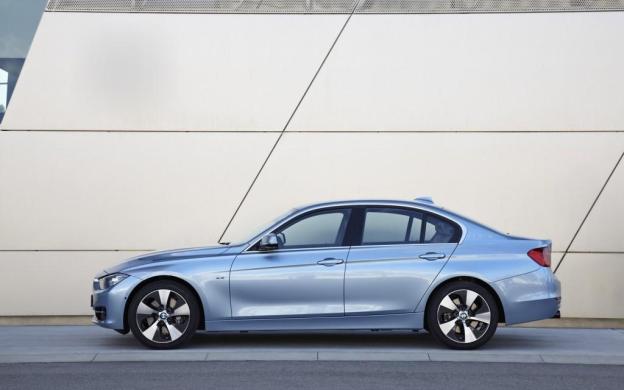 BMW is continuing to roll out new 3 Series models, replacing previous generation versions of its most popular car. Next up is the ActiveHybrid 3, a greener version of the sixth generation model that debuted a few months ago. Many people buy hybrids to save money on gas, but those frugal drivers might not know what to do with this one.
BMW is continuing to roll out new 3 Series models, replacing previous generation versions of its most popular car. Next up is the ActiveHybrid 3, a greener version of the sixth generation model that debuted a few months ago. Many people buy hybrids to save money on gas, but those frugal drivers might not know what to do with this one.
BMW did not release any fuel economy numbers for the ActiveHybrid 3, but it did say that the hybrid will be 10 percent more efficient than a regular 3 Series. However, the ActiveHybrid 3 will start at $50,195, making it $6,500 more than a well-equipped 335i sedan.
A 335i sedan, with a 3.0-liter turbocharged inline-six and automatic transmission, is rated at 23 mpg city, 33 mpg highway, and 26 combined. BMW’s 10 percent claim is the same one made for the ActiveHybrid 5 in relation to the 535i.
ActiveHybrid 3 buyers will be getting the most expensive 3 Series, other than the performance-focused M3. They will be getting something for their money, but maybe not what they paid for.
Excluding the almighty M3, the ActiveHybrid 3 will be the most powerful 3 Series sedan available. The hybrid has the same engine, with the same amount of power, as the 335i, but it also has an electric motor. In most hybrids, the electric motor has to make up for a less powerful gasoline engine. In the ActiveHybrid 3, every ounce of power the motor produces is a bonus.
The result is 335 horsepower and 332 pound-feet of torque, which not only makes the ActiveHybrid 3 more powerful than a 335i sedan, it also makes it more powerful than a 335is coupe.
All that power is sent to the rear wheels via an eight-speed automatic transmission. Given the extra weight of its hybrid components, it’s hard to say whether the ActiveHybrid 3 will actually be faster than a 335i sedan. Still, more power is always appreciated.
Whether or not the ActiveHybrid 3’s mpg ratings impress buyers, this car has some serious green technology under the hood. A normal 3 Series can shut off its engine at a stoplight, but this hybrid can drive up to 100 mph (in Eco Pro mode, 50 mph in Comfort mode) on electric power. It can also coast at up to 45 mph in 2.5-mile bursts.
An optional navigation system tells the car to use battery power to climb hills without the gasoline engine, and to regenerate on the way down.
Meanwhile, 3 Series passengers will not be deprived of the BMW luxury they are accustomed to. The car’s accessories, including HVAC and all interior electronics, are powered by the lithium-ion battery pack, which keeps everything running while the engine is shut down.
Ten percent may not sound like a lot, but the ActiveHybrid 3 has plenty of features to warrant a closer look. BMW seems to be emphasizing performance and emissions over mpg numbers, which is a worthy approach to making an eco-friendly car that is also fun. After all, if the ActiveHybrid 3’s electronic tricks can significantly lower emissions while preserving the driving experience, does saving money really matter?


